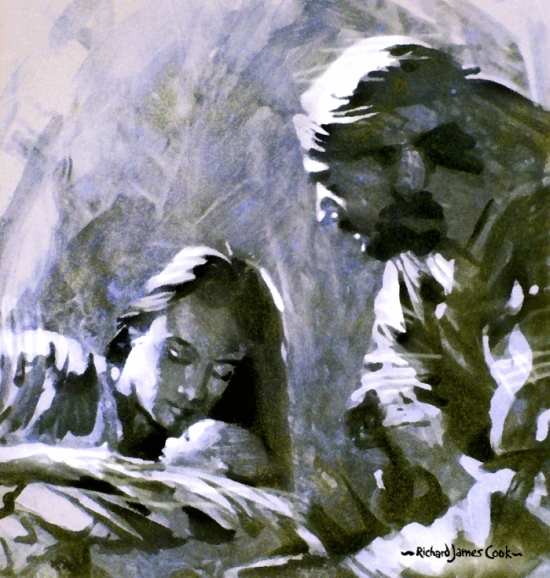707. A woman arrayed with the sun, signifies the church with those who are in love to the Lord, and thence in love towards the neighbor. This is evident from the signification of "woman," as being the spiritual affection of truth, from which the church is a church, consequently also the church in respect to that affection (of which above, n. 555; it follows that this means the New Church to be established by the Lord after the end of the present church, which is in the Christian world. This is evident also from the signification of the "sun," as being the Lord in relation to the Divine love, thus also love to the Lord from the Lord (of which also above, n. 401, 412); also from the signification of "arrayed" as being to live from that love, for the life of the love of everyone, both of man and of spirit and angel, forms a sphere about them from which what is their quality is perceived, even afar off; moreover, by means of that sphere consociations and conjunctions are effected in the heavens and also in the hells; and as here the church which is in love to the Lord from the Lord is treated of, and that church is meant by "the woman," and that love by "the sun," so "the woman arrayed with the sun" signifies the church with those who are in love to the Lord from the Lord. It is added, and thence in love towards the neighbor, because love towards the neighbor is derived from love to the Lord, as what is posterior is derived from its prior, or what is exterior from its interior; in a word, as an effect from its effecting cause; for love to the Lord is to love and to will those things that are of the Lord, consequently those things that the Lord has commanded in the Word, and love towards the neighbor is to act from that will, thus it consists in the performance of uses, which are effects. That this "woman" signifies the New Church, which is to be established by the Lord after the end of the church now existing in the Christian world, can be seen from what follows in this chapter, namely, that "she brought forth a son, a male child which the dragon wished to devour, and that was caught up to God," and that "the woman fled into the wilderness," and there too "the dragon wished to destroy her;" for from what follows it will be seen that "the son a male" means the truth of the doctrine of that church, and "the dragon" means those who are opposed to the truths of that doctrine. That the church here meant by the "woman" is the same church as "the New Jerusalem" that is described in the chapter, chap., and is there (verse 21:9) called "the bride, the Lamb's wife," will be seen in the explanation of that chapter.








